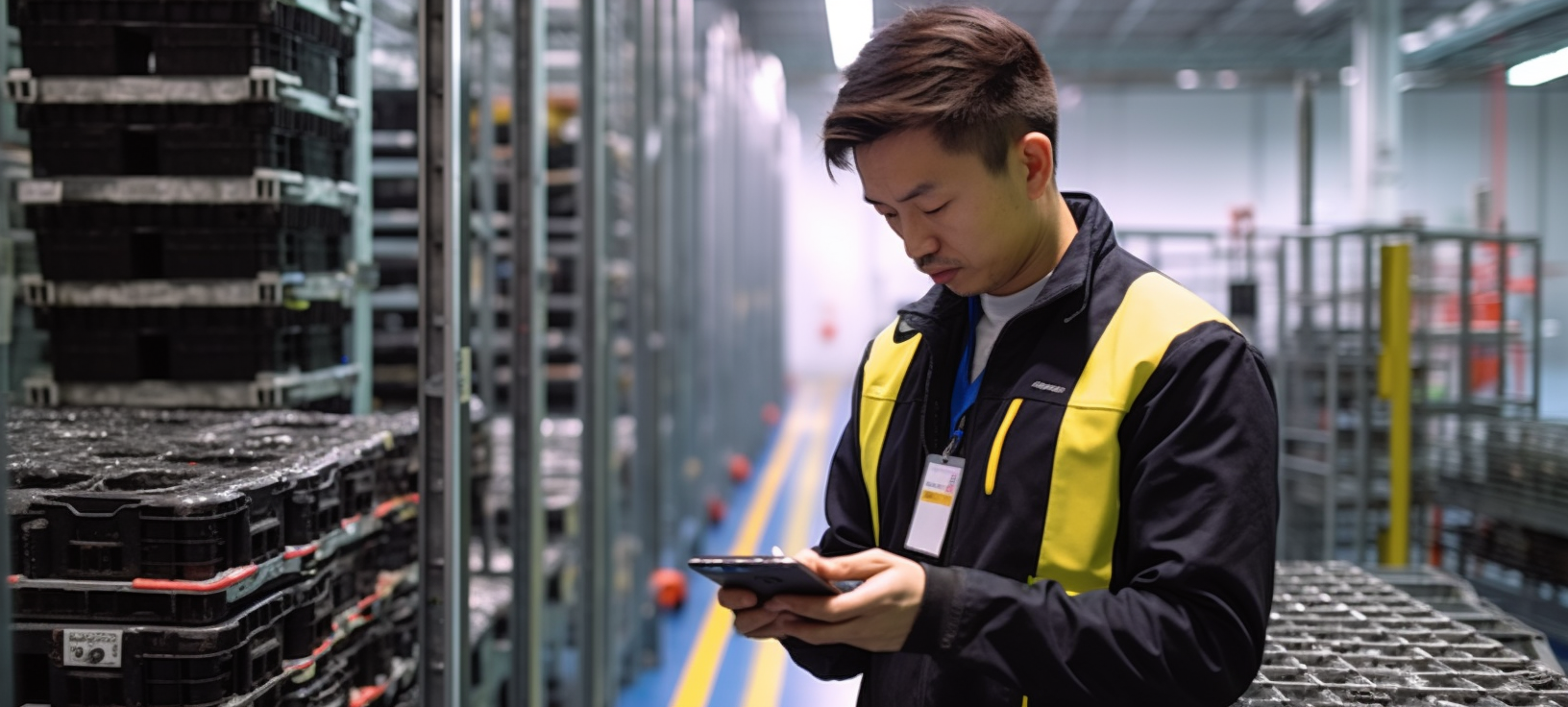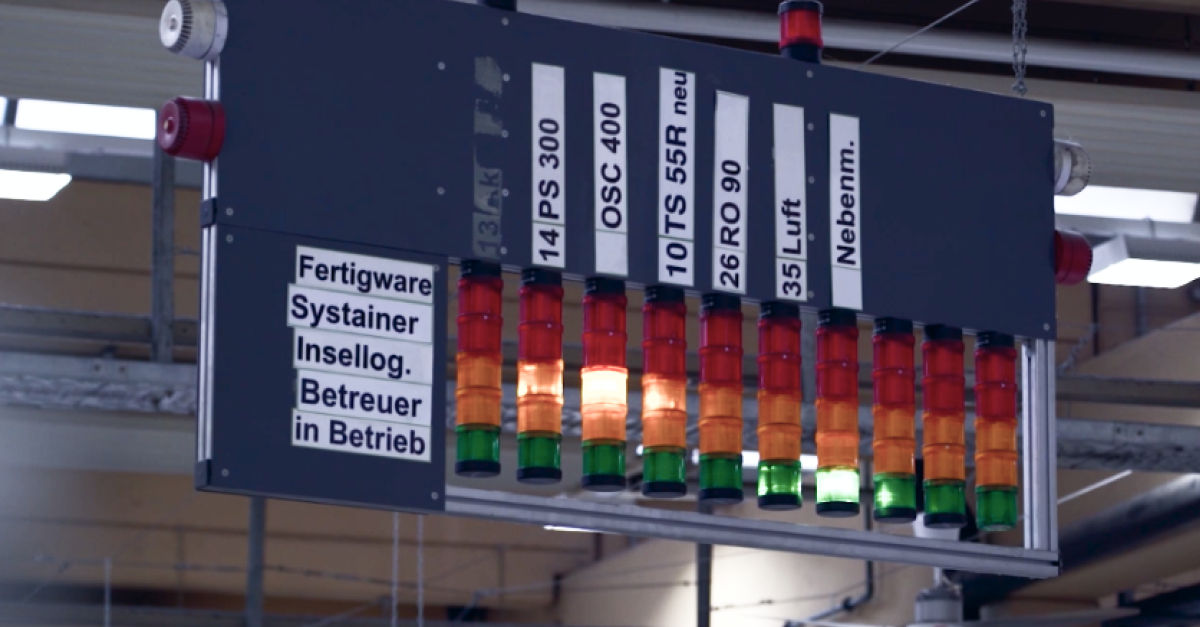The Power of a Modern Andon System

Manufacturing are replacing their legacy Andon system with a modern Andon systems using digital workflows to address the shortcomings of traditional methods. Here’s why:
Real-time data
Modern Andon systems continuously collect and display critical information about equipment status, production rates, quality metrics, and more – providing real-time visibility into production processes. It allows plant managers and area supervisors to swiftly identify bottlenecks, defects, or downtimes, pinpoint the exact root cause, and quickly resolve issues. Another benefit of historical data lies in tracking trends that facilitate process optimization and predictive maintenance, further reducing unplanned downtime and improving overall efficiency.
Integration
Modern Andon systems seamlessly integrate with other manufacturing systems, serving as a central hub that links all facets of the production process. This network creates the transparency required for in-depth data analysis and informed decision-making. For instance, if a machine detects a fault, the Andon system can automatically notify maintenance teams, order replacement parts, and adjust production schedules in real-time.
Remote access
Modern Andon systems offer remote access and monitoring through web-based or mobile applications. This capability allows factory managers and key personnel to check the status of equipment, production lines, and quality control measures from virtually anywhere with an internet connection. Whether it’s reviewing real-time data, troubleshooting issues, or making critical decisions on the go, remote accessibility enhances the responsiveness and efficiency of factory operations. What’s more, digital Andon systems enable remote support, contributing to quicker issue resolution, reduced downtime, and improved overall productivity.
Data Analytics
These systems offer powerful data analytics tools for the interpretation and visualization of information. This helps identify trends and patterns, track production KPIs, and feed the continuous improvement loop. With this data-driven insight, factories can optimize processes, reduce waste, and enhance product quality. For example, frontline workers, supervisors, and plant managers can detect anomalies that might not be apparent through manual observation – such as early signs of machinery wear, quality issues, or production bottlenecks.
Configuring a modern Andon system
Let’s consider a manufacturing scenario in which a factory produces automobile components. To configure a modern Andon system, follow these principles:
Define key metrics
Begin by defining your factory’s key performance metrics. These metrics should be closely aligned with your production goals and can include parameters like production cycle times, defect rates, and equipment downtime. Defining these metrics serves as a foundational step, as it determines what you’ll be monitoring and measuring for process improvement.
Identify data sources
Once your key metrics are established, identify the sources of data necessary to monitor these metrics accurately. In the case of our automobile component factory, data sources could include IoT sensors installed on machinery and equipment, Enterprise Resource Planning (ERP) and Manufacturing Execution System (MES) software, data from quality control systems, and even data from smart devices. These data sources provide the necessary input for your Andon system to operate effectively.
Real-time monitoring
Implement digital displays and notifications that offer real-time updates on the identified metrics. Operators on the factory floor should have immediate access to this information through various means, depending on the station’s requirements. Industrial-grade tablets, smartphones, or smartwatches are examples of devices that can be used to present this real-time data. The ability to spot issues instantly is essential for swift decision-making and problem-resolution.
Automated alerts
One of the cornerstones of a robust Andon system is the ability to set up automated alerts. These alerts should be configured to trigger when metrics
deviate from acceptable ranges. For instance, if the defect rate surpasses a predefined threshold, the Andon system should send out automated alerts. These alerts should not only notify the appropriate personnel but also provide them with the necessary information to address the issue effectively. Automation ensures timely response and minimizes the potential for human error in the alerting process.
Remote accessibility
Modern manufacturing is often characterized by geographically dispersed operations and the need for off-site expertise. Therefore, it is crucial to ensure that your Andon system is accessible remotely through mobile devices or computers. This accessibility empowers off-site experts to provide immediate assistance, collaborate with on-site teams, and make informed decisions, even when physically distant from the factory floor.
Data Analytics
Leverage advanced data analytics tools to collect and analyze historical data generated by your Andon system. This step is critical for identifying recurring issues, trends, and areas for process improvement. By sifting through historical data, manufacturers can uncover valuable insights that aid in optimizing production processes, reducing waste, and enhancing product quality.
TL;DR
Successfully configuring a modern Andon system is a multifaceted process that requires thoughtful consideration of key performance metrics, data sources, real-time monitoring, automated alerts, remote accessibility, and data analytics. Following these principles will not only empower your factory with the ability to respond rapidly to issues but also drive continuous improvement and competitiveness in today’s fast-paced and data-driven manufacturing world. Read more about the power of modern digital Andon systems in our definitive guide for Digital Andon.
In summary, the power of modern Andon systems lies in:
- Shortening response times by automatically and instantly assigning the task to the right person, based on totally flexible business rules. Notifications are sent to the relevant people only, avoiding multiple people going after the same issue
- Increasing overall equipment efficiency (OEE) and therefore productivity through improved reaction times
- Distributing workload evenly between operators based on skill level, availability, priority, and more


